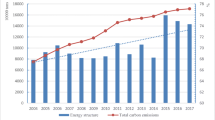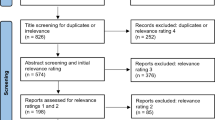Abstract
Climate change disrupts the balance of natural ecosystems and threatens the sustainable development of human society. As the leading industry in many countries, manufacturing promotes economic growth; unfortunately, it also emits large quantities of greenhouse gases. Thus, it is necessary to transform the production pattern of manufacturing into green production. Although technology innovation is the only way to tackle the issue, different types of technology innovation may lead to various environmental performances. We argue that low-carbon technology innovation (LCTI) is the key to green production. Using data of Economic Co-operation and Development (OECD) countries from 1990 to 2014, we use the patent-stock method to measure LCTI levels and analyze its development trend in OECD countries. Based on the shepherd distance function, we measure carbon efficiency and carbon productivity by the fixed-effect Stochastic Frontier Analysis (SFA) model. Then we investigate the effect of LCTI on carbon emission efficiency in manufacturing by the fixed-effect regression model. After controlling some variables, evidence shows a significant positive influence of LCTI on the environmental performance of manufacturing. The level of LCTI constantly increased in OECD countries during the study period. Among these countries, the level of low-carbon technology in the chemical industry is the highest; in most countries, the low-carbon technology of the production process grows fastest. Policy implications are further discussed.




Similar content being viewed by others
References
Aldieri L, Vinci CP (2020) Climate change and knowledge spillovers for cleaner production. J Clean Prod 2020:122729
Bai Y, Ochuodho TO, Yang J (2019) Impact of land use and climate change on water-related ecosystem services in Kentucky, USA. Ecological Indicators 102:51–64
Beinhocker E, Oppenheim J, Irons B, Lahti M, Farrell D, Nyquist S, Remes J, Naucler T, Enkvist P (2008) The carbon productivity challenge: curbing climate change and sustaining economic growth. McKinsey Global Institute
Bosetti V, Carraro C, Duval R, Tavoni M (2011) What should we expect from innovation? A model-based assessment of the environmental and mitigation cost implications of climate-related R&D. Energy Econ 33(6):1313–1320
Bottazzi L, Peri G (2007) The international dynamics of R&D and innovation in the long run and in the short run. Econ J
Chen G, Hou F, Chang K (2017a) Regional decomposition analysis of electric carbon productivity from the perspective of production and consumption in China. Environ Sci Pollut Res
Chen X, Luo Z, Wang X (2017b) Impact of efficiency, investment, and competition on low carbon manufacturing. J Clean Prod 143:388–400
Cole MA, Elliott RJR, Okubo T, Zhou Y (2013) The carbon dioxide emissions of firms: a spatial analysis. J Environ Econ Manag 65:290–309
Dechezlepretre A, Glachant M, Hascic I, Johnstone N, Meniere Y (2011) Invention and transfer of climate change-mitigation technologies: a global analysis. Post-Print 5:109–130
Du K, Li J (2019) Towards a green world: how do green technology innovations affect total-factor carbon productivity. Energy Policy 131(AUG.):240–250
Du K, Yan Z, Yang Z (2018) Progress of evalutaiton methods on energy and environmental performance. J Environ Econ 3:113–138 (in Chinese)
Fan LW, You J, Zhang W, Zhou P (2021) How does technological progress promote carbon productivity? Evidence from Chinese manufacturing industries. J Environ Manag 277:111325
Fysikopoulos A, Pastras G, Alexopoulos T, Chryssolouris G (2014) On a generalized approach to manufacturing energy efficiency. Int J Adv Manuf Technol 73:1437–1452
Griliches Z (1998) Patent statistics as economic indicators: a survey. NBER Chapters
Grossman PJ (1988) Government and economic growth: a non-linear relationship. Public Choice 56(2):193–200
Haščič I, Silva J, Johnstone N (2015) The use of patent statistics for international comparisons and analysis of narrow technological fields. Oecd ence Technology & Industry Working Papers
Hu X, Liu C (2016) Carbon productivity: a case study in the Australian construction industry. J Clean Prod 112:2354–2362
IEA (2020) CO2 emissions from fuel combustion. https://webstore.iea.org/co2-emissions-from-fuel-combustion-2020-highlights.
IPCC (2007) Climate change; The Physical Science Basis, pp 866-871
Jiankun H, Mingshan S (2011) Carbon productivity analysis to address global climate change. Chinese Journal of Population, Resources and Environment, pp 9–15 (in Chinese)
Johnstone N, Hascic I, Popp D (2010) Renewable energy policies and technological innovation: evidence based on patent counts. Environ Resour Econ 45:133–155
Kaya Y, Yokobori K (1997) Environment, energy, and economy: strategies for sustainability
Keller W (2002) Geographic localization of international technology diffusion. Am Econ Rev 92:120–142
Keller W (2010) International trade, foreign direct investment, and technology spillovers. Social ence Electronic Publishing, pp 793–829
Li J, Cheng Z (2020) Study on total-factor carbon emission efficiency of china’s manufacturing industry when considering technology heterogeneity. J Clean Prod 260:121021
Li S, Wang S (2019) Examining the effects of socioeconomic development on China’s carbon productivity: a panel data analysis. Sci Total Environ 659:681–690
Li W, Wang W, Wang Y, Ali M (2018) Historical growth in total factor carbon productivity of the Chinese industry - a comprehensive analysis. J Clean Prod 170:471–485
Lin B, Du K (2015) Modeling the dynamics of carbon emission performance in China: a parametric Malmquist index approach. Energy Econ 49:550–557
Ma L, Zhai X, Zhong W, Zhang Z-X (2019) Deploying human capital for innovation: a study of multi-country manufacturing firms. Int J Prod Econ 208:241–253
Midilli A, Dincer I, Ay M (2006) Green energy strategies for sustainable development. Energy Policy 34(18):3623–3633
Paksoy T, Ozceylan E (2014) Environmentally conscious optimization of supply chain networks. J Oper Res Soc 65:855–872
Peng B, Zheng C, Wei G, Elahi E (2020) The cultivation mechanism of green technology innovation in manufacturing industry: from the perspective of ecological niche. J Clean Prod 252:119711
Popp D (2012) The role of technological change in green growth. Policy Research Working Paper Series
Porter ME (1991) America’s Green Strategy. Scientific American 264, págs. 193-246
Porter ME, Linde CVD (1995) Toward a new conception of the environment-competitiveness relationship. J Econ Perspect 9:97–118
Shen N, Liao H, Deng R, Wang Q (2019) Different types of environmental regulations and the heterogeneous influence on the environmental total factor productivity: empirical analysis of China’s industry. J Clean Prod 211:171–184
Sueyoshi T, Li AJ, Liu XH (2019) Exploring sources of China’s CO2 emission: decomposition analysis under different technology changes. Eur J Oper Res 279:984–995
Sun H, Edziah BK, Sun C, Kporsu AK (2019) Institutional quality, green innovation and energy efficiency. Energy Policy 135:111002
Tol RSJ (2009) The economic effects of climate change. J Econ Perspect 23:29–51
Verdolini E, Galeotti M (2011) At home and abroad: an empirical analysis of innovation and diffusion in energy technologies. J Environ Econ Manag 61:119–134
Wang B (2017) Review of environmental policy and technological innovation. Econ Rev (in Chinese)
Wang HJ, Ho CW (2010) Estimating fixed-effect panel stochastic frontier models by model transformation. J Econ 157:286–296
Yan Z, Du K, Yang Z, Deng M (2017) Convergence or divergence? Understanding the global development trend of low-carbon technologies. Energy Policy 109:499–509
Yan Z, Shi R, Yang Z (2018) ICT development and sustainable energy consumption: a perspective of energy productivity. Sustainability
Yan Z, Zou B, Du K, Li K (2020) Do renewable energy technology innovations promote China’s green productivity growth? Fresh evidence from partially linear functional-coefficient models. Energy Econ 90:104842
Yin J, Zheng M, Chen J (2015) The effects of environmental regulation and technical progress on CO2 Kuznets curve: an evidence from China. Energy Policy 77:97–108
Yu Y, Choi Y, Wei X, Chen Z (2017) Did China’s regional transport industry enjoy better carbon productivity under regulations? J Clean Prod 165:777–787
Zhai X, An Y (2020) Analyzing influencing factors of green transformation in China’s manufacturing industry under environmental regulation: a structural equation model. J Clean Prod 251:119760
Zhang N, Liu Z, Zheng X, Xue J (2017a) Carbon footprint of China’s belt and road. Science 357:1107–1107
Zhang YJ, Peng YL, Ma CQ, Shen B (2017b) Can environmental innovation facilitate carbon emissions reduction? Evidence from China. Energy Policy 100:18–28
Zhang L, Xiong L, Cheng B, Yu C (2018a) How does foreign trade influence China’s carbon productivity? Based on panel spatial lag model analysis. Struct Chang Econ Dyn 47:171–179
Zhang YJ, Sun Y-F, Huang J (2018b) Energy efficiency, carbon emission performance, and technology gaps: evidence from CDM project investment. Energy Policy 115:119–130
Zhou P, Ang BW (2008) Decomposition of aggregate CO2 emissions: a production-theoretical approach. Energy Econ 30:1054–1067
Zhou P, Ang BW, Han JY (2010) Total factor carbon emission performance: a Malmquist index analysis. Energy Econ 32:194–201
Zhou P, Ang BW, Wang H (2012) Energy and CO2 emission performance in electricity generation: a non-radial directional distance function approach. Eur J Oper Res 221:625–635
Zhou Y, Liu W, Lv X, Chen X, Shen M (2019) Investigating interior driving factors and cross-industrial linkages of carbon emission efficiency in China’s construction industry: based on Super-SBM DEA and GVAR model. J Clean Prod 241:118322
Availability of data and materials
The datasets generated and/or analyzed during the current study are available in the OECD database, https://stats.oecd.org/.
Funding
The Major Project of the National Social Science Foundation of China (No. 15ZDA052), National Soft Science Project of State Forestry and Grassland Administration (No. 2019131039), the Key Special Funds of Ministry of Agriculture and Ministry of Finance (Grant No. CARS-07-F-1), and the Key Project of Six Industrial Research Institutes of Northwest Agricultural and Forestry University (Grant No. Z221021601) supported this research. Major Research Project of County Economy in Shaanxi Province (No. 2019XY012) and Scientific Research and Innovation Projects of Northwest A&F University (No. JGYJSCXXM202001) also supported this study.
Author information
Authors and Affiliations
Contributions
Rui Shi: conceptualization, writing (original draft), methodology, formal analysis, investigation, and software. Yu Cui: investigation and writing—review and editing. Minjuan Zhao: funding acquisition, project administration, and supervision.
Corresponding author
Ethics declarations
Ethical approval
“Not applicable” for that section.
Consent to participate
“Not applicable” for that section.
Consent for publication
“Not applicable” for that section.
Competing interest
The authors declare no competing interests.
Additional information
Responsible editor: Roula Inglesi-Lotz
Publisher’s note
Springer Nature remains neutral with regard to jurisdictional claims in published maps and institutional affiliations.
Rights and permissions
About this article
Cite this article
Shi, R., Cui, Y. & Zhao, M. Role of low-carbon technology innovation in environmental performance of manufacturing: evidence from OECD countries. Environ Sci Pollut Res 28, 68572–68584 (2021). https://doi.org/10.1007/s11356-021-15057-0
Received:
Accepted:
Published:
Issue Date:
DOI: https://doi.org/10.1007/s11356-021-15057-0




